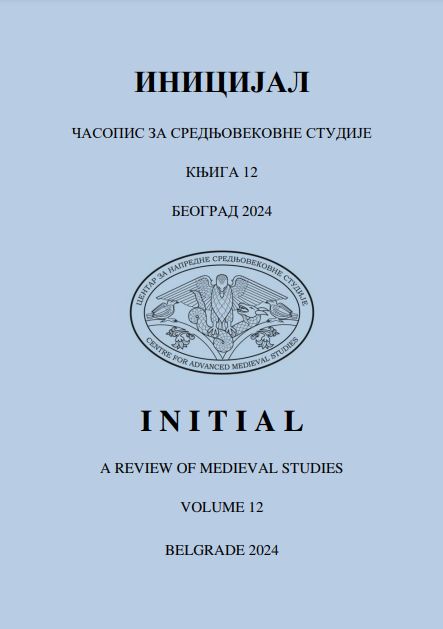Између историје и традиције – наративи о Стефану Немањи u dubrovačkim hronikama
Between history and tradition ‒ narratives about Stefan Nemanja in the chronicles of Ragusa
Author(s): Ivana KomatinaSubject(s): Middle Ages, 6th to 12th Centuries, 13th to 14th Centuries
Published by: Центар за напредне средњовековне студије
Keywords: humanism; historiography of Ragusa; Stefan Nemanja; Ragusa; chronicles
Summary/Abstract: Several narratives about Stefan Nemanja appear in the chronicles of Ragusa, some of them are confirmed in other source material, while others belong only to their tradition. In the chronicles from the end of the 15th or 16th century, compiled by Ludovicus Cerva Tubero and Serafinо Razzi, the event of the sale of the Ston and Pelješac in 1333 is wrongly attributed to the person of Stefan Nemanja, although it is clear from the context that King Stefan Du- šan is meant. The progenitor of Nemanjić dinasty is not mentioned in the An- nals of Ragusa, while Nicola Ragnina, who reworked the mentioned Annals, is the first to introduce Stefan Nemanja into the realistic historical framework of the 12th century, and attributes to him the attack on Ragusa in 1172. Ragni- na recognizes the reason for the war in the usurpation of the rights of the church of Ragusa by Stefan Nemanja, and in his support for the bishopric of Cattaro. As for the war from the eighties of the 12th century, he links it only to the personality of Stefan Nemanja, and the reason for the conflict would be the murder of the bishop of Hum, i.e. again of an ecclesiastical nature. The humanists of the 17th century, Mauro Orbini, Giacommo Luccari, that is, of the 18th century, Giunio Resti, bring far more extensive news about the grand župan Stefan Nemanja. That’s when we meet the first news about the origin of Stefan Nemanja because the chroniclers assume that his father was Desa. Orbini brings news about the conquest of Dioclea and about the fight with Prince Radoslav, in whom we recognized the figure of the last grand Prince of Dioclea, Mihailo. Orbini also brings news about Stefan Nemanja’s attack on Ragusa in the seventies of the 12th century, only he links it to the year 1177, as does Resti, with the fact that the reason for the conflict according Orbini as well as Ragnina was the relation between the church of Ragusa and the church of Cattaro while according to Resti it concerned the relation between the church of Ragusa and the Metropolitanate of Ras, which obviously imitates Luccari, who also brings news about Nemanja’s attack on Ragusa in 1172, citing the same reason. Orbini also brings a tradition about a land battle between Prince Miroslav, elder brother of Nemanja, and the people of Ragusa near Konavli, and then describes their conflict at sea and dates it to the year 1184. He also attributes the eight-day siege of Ragusa to Prince Miroslav and links it to 1185, as well as Stracimir’s attack on Korčula when his brothers – Nemanja and Miroslav came to his aid. Most likely Luccari also meant those Miroslav’s conflicts, but, as we pointed out, he most likely mistakenly put them a little before 1179. Resti particularly emphasizes the jo- int battles of Nemanja and his brothers in 1184 and 1185. against Ragusa, and he is also the first to bring the provisions of the peace treaty between Nema- nja and Ragusans from 1186. Both Orbini and Resti mention the battle on the Morava, and very briefly explain the change on the throne. All this indicates that the chroniclers wrote narratives related to the mutual relationship betwe- en Stefan Nemanja and Ragusa, and some of them, such as Nemanja’s attack at the beginning of his reign, then Nemanja’s unfavorable attitude towards the church of Ragusa in the mentioned period, as well as the one about Nema- nja’s or Miroslav’s, or their joint role in the attacks from the eighties of the 12th century, regardless of the fact that they have no confirmation in contem- porary sources, should be taken into consideration.
Journal: Иницијал. Часопис за средњовековне студије
- Issue Year: 2024
- Issue No: 12
- Page Range: 49-76
- Page Count: 28
- Language: Serbian

